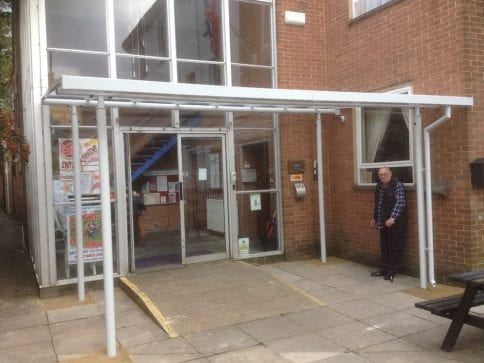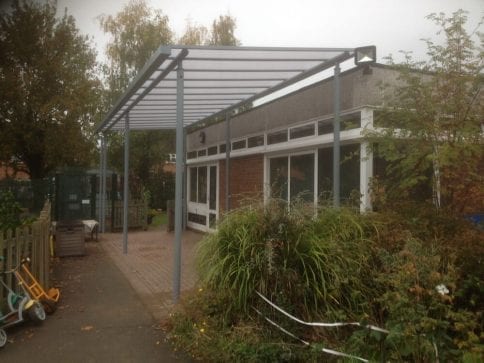Hayley Hart –Retired Head of School at Dudley Port Annexe specialising in SEBD and SEN
Thinking outside the box is not a new concept in education, and neither is teaching outside the classroom. But even as further opportunities arise in methods of alternative learning –such as links with nature preservation organisations, forest school and STEM- teachers are reluctant as ever to leave the comfortable confinement of a classroom.
It can be argued that the structure of a school day can prepare students for the professional environments they will later encounter. However, it also works to smother a child’s natural instinct to independently explore and discover the world around them. In a society that calls for children to grow up before their time, it is now the shared responsibility of both parents and teachers to allow children to indulge their limitless imaginations whilst they still have the opportunity and inclination.
Alternative Methods
These alternate methods of learning, especially when unconfined to a building, come with many advantages. The most obvious is the valuable time children have to interact with nature. It promotes an interest in the micro-life systems that are found in the natural land, and raises awareness of the environment and how humans affect these natural cycles. Simple questions such as “Why is the sky blue?”, “Why is it still cold in summer?” and “Why do foxes eat out of rubbish bins?” seem trivial. Yet, if considerately responded to, it can encourage a child’s inquisitive nature and an understanding of the surrounding natural world.
This behaviour can also benefit a child in later education. In being encouraged to question and explore new concepts from a young age, it can aid with exploring different perspectives in more comprehensive subjects such as English, Science and History. If a child is willing to question, they will also be more willing to listen. This consequently leads to more active rate of learning and fosters an ability to retain information more effectively, especially if a child is now interested in the taught topic.
However, academic development is not the only benefit of an outdoor curriculum. Through being in an open, seemingly unrestricted space covered learning area it can alleviate many of the symptoms associated with behavioural conditions such as ADHD and ADD.
According to multiple studies into the effects of “Green Therapy” on ADHD, sufferers showed an increased academic ability after engaging in one of the afore mentioned activities. “Green Therapy” engages young ADHD sufferers in outdoor activities such as walking, hiking, field sports and gardening.
Success
As an educator, I have witnessed first-hand how successful this approach is as an intervention technique. Whilst teaching at an SEBD school, gardening was introduced as a student activity. Within a few months, the pupils had cultivated a “mini farm” and were providing enough fresh vegetables to supply the school kitchen, even with surplus for staff to take home. Following this success,, the School had an Astro Turf area installed, with student access granted at any time of the day, and not just at break times. Further to these outdoor activities, subjects such as POI –a performance art –were added to the curriculum. As a result, there was a noticeable increase in attendance, quality of work and progress of individuals. There was even an increase in attendance to formalised exams, with a 100% pass rate. Just months before, these students had been branded as unable to be educated, and were thought to later become “NEET’s” (Not in Education, Employment or Training). https://en.wikipedia.org/wiki/NEET
Health and Safety
It is widely recognised that regular outdoor exposure is beneficial to students, especially those with learning and behaviour difficulties. Yet, it must also be acknowledged that this mode of alternate teaching has some downfalls. The most obvious is the Health and Safety that must be considered when working in outside environments. There are a number of potential risks, including safeguarding students, particularly if you have vulnerable children present. Many educational practitioners (due to lack of experience in organising exertions) will see this risk as an immediate inhibitor and will therefore refuse the concept, leaving it to other, more experienced teachers. Yet, there is a large difference between perceived and actual risk, and most Health and Safety obstacles can be overcome with a little forward planning.
In reality, all schools must carry out risk assessments for the majority of everyday activities. Subsequently, an assessment for merely a different, albeit new, activity is not as arduous as one might think. If a teacher cannot complete a risk assessment before the trip, they can be sure to find a site member who will be more than willing to help. With just a little preparation, you can avoid the majority of Health and Safety risks.
Exploring New Ways of Teaching
Perhaps another inhibitor is lack of knowledge. Many teachers believe they do not know how to conduct a lesson outside, and this, again, like so many elements of education, just requires a little preparation. Most educators will have experienced a topic in their teaching careers that they are unsure of, and needed to conduct homework on; working in a different environment is no different. The whole concept is about exploring new ways of teaching, and new ways of engaging every child and ensuring that you are giving a student the best possible opportunity to learn.
Getting outside the classroom is essential, and doing it every day is revolutionary. A school that can offer a daily opportunity to learn outside fully understands the instinctive needs of a child, beyond their identity as a student.
Ideas
Yet this does not have to warrant a radical change in the curriculum; it simply adopts a more creative approach to how subjects are taught. For instance, students engage in Physical Education on average twice a week. They also have Science lessons three to four times a week. Perhaps one of these lessons could be a field experiment, or as my old Science teacher did, creating the solar system to scale on the school field? English lessons are conducted three to four times a week. Have your pupils ever seen Shakespeare performed outside – consider building an amphitheatre complete with shade sails, take your text outside and stage it. Or what about History? Create a dig site on campus and give the students a practical understanding on how to analyse artefacts.
Look at your timetable, and open up a few opportunities to get outside. You will start to see how simple, effective and truly revolutionary the possibilities of outdoor teaching are.


